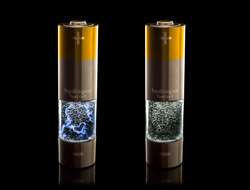Enhanced fuel cell performance with optimized flows

Fuel cells convert the chemical energy in fuels (hydrogen and hydrocarbons such as methane, butane, gasoline or diesel) into electrical energy to power devices. EU researchers developed a simplified computational model simulating flow distribution within the fuel cell stack with the potential to enhance performance and efficiency and thus the widespread implementation of this clean, renewable form of energy.
Over the past 50 years, fuel cells have been gaining interest as an alternative renewable form of energy to minimize dependence on fossil fuels while protecting the environment.
Particular focus has been on solid oxide fuel cells (SOFCs) because of their high-efficiency, low-cost, multi-fuel capacity and obvious environmental benefits. With no moving parts rendering them vibration-free, they even eliminate noise pollution.
However, uneven and inefficient distribution of reactant gas flows especially under high fuel utilization conditions often result in decreased efficiency and performance loss.
European researchers with funding for the Hydrosofc project sought to apply simple flow network modelling techniques, computationally cheaper than complex computational fluid dynamics (CFD) methods, to investigate the most important factors affecting flow distribution and enable its reliable prediction. Such methods could provide the accuracy engineers require faster and with enhanced optimization capabilities.
Scientists developed three different models to simulate a range of effects and their importance in flow distribution, including a semi-three-dimensional (3D) CFD model, a 2D analytical model and a 2D hydraulic model.
They determined that operation of the stack under electric load (high fuel utilisation) conditions increases maldistribution for U-flow manifold configurations (a U-turn of sorts) in which flow enters and leaves from the same end of the stack compared to Z-flow, characterized by flow entering on one end and leaving on the other end.
According to the models, maldistribution was determined by the ratio of pressure drop in the inlet and outlet manifolds of the model to the pressure drop in the fuel cell flow field. Experimental measurements confirmed computational results and supported the feasibility of the hydraulic model in calculating flow distribution in the fuel stack with the accuracy required for engineering design estimates.
Hydrosofc scientists have provided a simplified computational flow model capable of predicting maldistributions of flow critical to SOFC performance and overcoming one of the main stumbling blocks so far to widespread SOFC commercial exploitation.
Provided by CORDIS



















